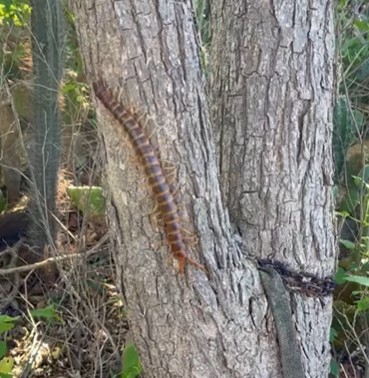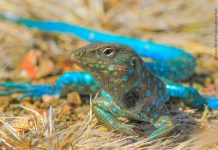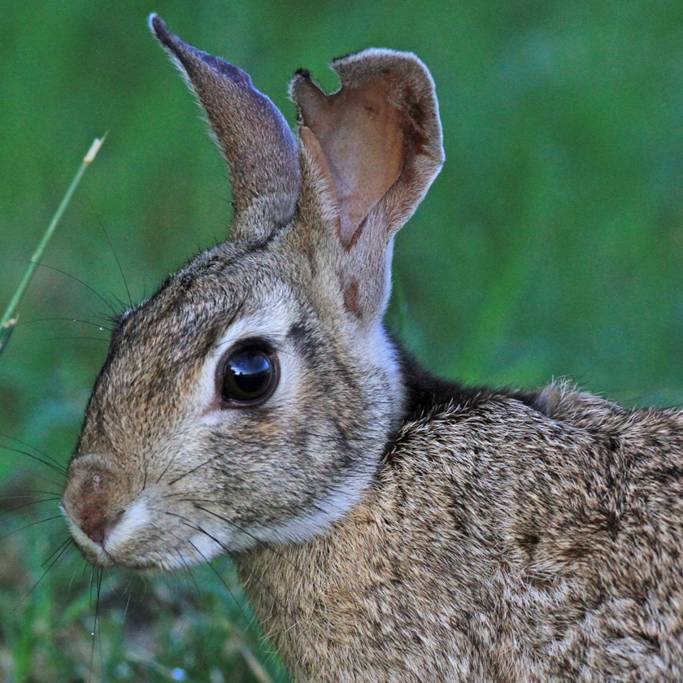The ‘Lisinbein’ (Scolopendra gigantea), also known as the Giant Centipede, is one of the largest centipedes in the world and is found in Aruba. Its size and hunting prowess make it a fascinating, if often misunderstood, creature.
Despite its fearsome reputation, it plays a crucial ecological role that often goes unnoticed.
As an apex invertebrate predator, Scolopendra gigantea helps maintain balance in the ecosystem. Moreover, they themselves are a food source for birds such as the Crested Caracara (Warawara) and the Aruba burrowing owl (Shoco).
It controls populations of smaller invertebrates and even small vertebrates, ensuring that no species overpopulates, which could disrupt local biodiversity.
Its presence can indicate a healthy, functioning ecosystem. Its sensitivity to environmental changes makes it a bioindicator of ecological balance.
It can reach an impressive length of up to 30 centimeters (approx. 12 inches) and live for around 5 to 10 years in the wild. Its size and longevity makes it a significant and long-term part of the ecosystem.
A mother’s love
In Scolopendra species, the ‘mother’ typically exhibits maternal care by curling around her eggs and newly hatched young. She stays coiled around the clutch, protecting it from predators and fungi, which are serious risks in the moist environments these centipedes often inhabit. The mother maintains a clean environment for the eggs by carefully grooming them, which helps prevent fungal growth that could endanger the brood. This behavior may continue until the young centipedes have undergone their first molt, making them more capable of independent survival.
This form of parental care is beneficial in increasing the survival rates of offspring, as the mother’s protection provides a safe ‘environment’ during their vulnerable developmental stages. It’s a fascinating adaptation because it shows a form of care that resembles more complex behaviors observed in vertebrates.
No bark, but all bite!
The lisinbein is known locally for having a really painful sting. While venomous, the Lisinbein is generally not aggressive toward humans unless provoked. Its role as a guardian of balance in the ecosystem helps protect the natural beauty of Aruba by keeping the ecosystem in harmony.
Editor’s note: Information and pictures provided by Ms. Natasha Silva from the Aruba Conservation Foundation.
















